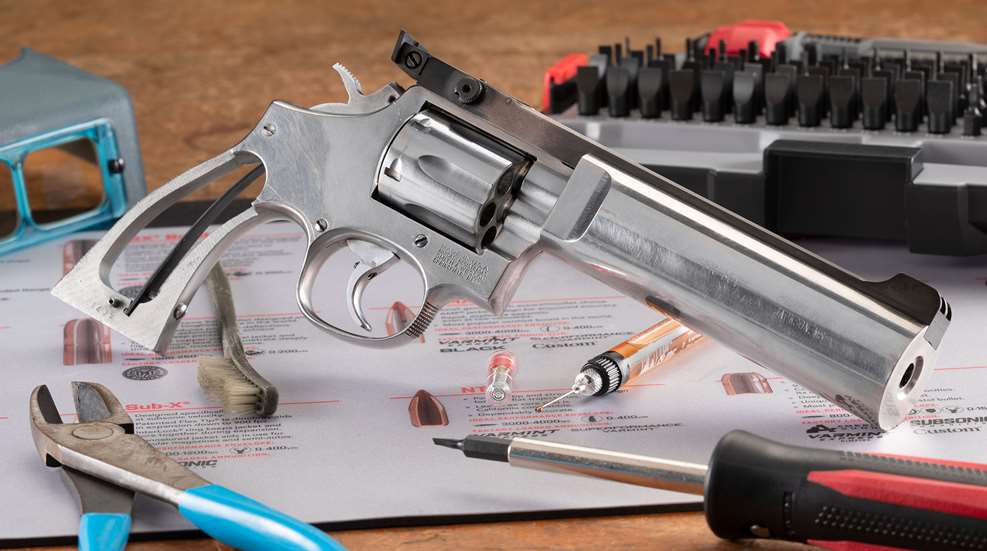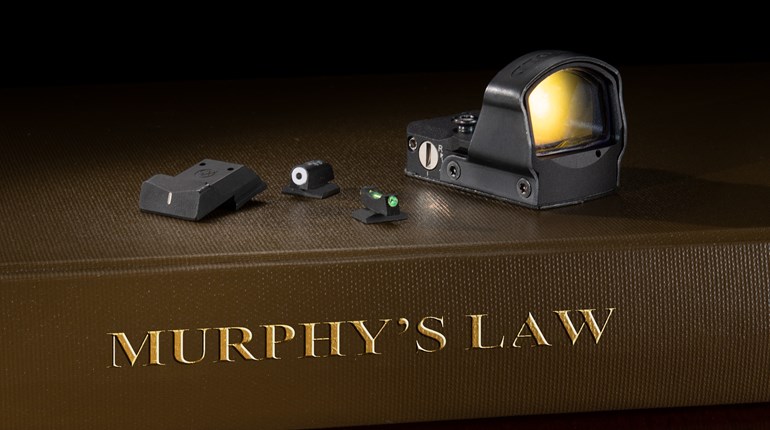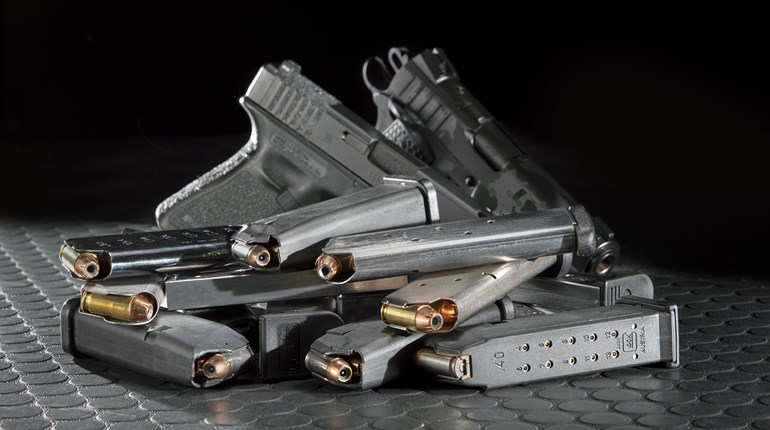
Guns crafted for specific tasks—like PPC—may have seemingly appealing features that don’t necessarily serve well in other applications, such as for self-defense.
This is going to be another in an intermittent series of columns examining the various topics on which I’ve changed my mind over the last 20 years or so as a result of being hip-deep in the defensive-pistol world.
This particular column is going to be all about triggering people by discussing what I’ve learned about triggers over that time—and why what I thought I knew about triggers before then was wrong, possibly even counterproductive.
Let’s talk about double-action revolver triggers, for instance. Back in the early 1990s, at the first gun store where I worked, I ran across a couple of very nicely tuned PPC-competition revolvers customers traded in.
For the uninitiated, “PPC” stands for—well, stood for—“Police Pistol Combat,” a shooting sport originally fostered to encourage marksmanship ability with the double-action revolvers of the era when it was founded (which would be the late 1950s).
When PPC started out, the overwhelming majority of law-enforcement officers in the U.S. were equipped with double-action revolvers; for the most part, medium- and large-frame Smith & Wesson and Colt products.
Because hitting a target with a double-action revolver trigger pull is, for some reason, viewed as a Herculean task right up there with mopping out the Augean Stables with a mop made from the mane of the Nemean Lion, it was decided that inaugurating a game where police officers would be forced to use the double-action trigger pulls on their revolvers to have any chance at winning was the way to go.
Of course, once you gamify something by adding rules and scoring, gamers are gonna game that thing. Within the space of a single police firearm-instructor’s career, the winning revolvers in PPC matches went from regular double-action cop guns to heavy-barreled monstrosities with esoteric sights mounted atop barrel ribs and triggers that were obscenely heavily massaged.
It was the latter kind of revolver that I ran into back in 1994 in our trade-in section, and they enthralled me. At the time I was not, to put it very charitably, the world’s best pistol shooter. To be blunt, I was awful in the marksmanship department. The only thing worse than me shooting my Glocks and SIGs and CZs was me trying to shoot a friend’s double-action revolver. I was sure that the problem was the trigger on the revolvers, not the tension of the nut actuating the trigger.
In the early 2000s, when I was working in a shop with an outstanding gunsmith who could do a proper PPC-style trigger job, I had several revolvers converted that way. All the bearing surfaces were exquisitely polished, and (here’s the important part) factory springs got substituted with lighter replacements.
This had two notable side effects: The first is that the lighter mainspring was unreliable with harder primers—“Federal primers only!” was the frequent admonition. The other is that the reduced spring weights caused the trigger to reset with less authority.
That slower trigger reset isn’t that big of a deal for the PPC course of fire, which never requires pushing much speed with the gun. The fastest strings of fire are 12 rounds in 20 seconds, after all. Try shooting any faster than that, though, and your finger will quickly outrun the trigger. There’s a reason Jerry Miculek runs a heavier-than-stock rebound spring.
This is why, years after I had all that work done, those revolvers found themselves back on a gunsmith’s bench—Denny Reichard at Sand Burr Gun Ranch in Rochester, IN—this time getting factory springs reinstalled to replace the lightweight gamer springs. Now I have reliable ignition, don’t need to worry about outrunning the trigger and, thanks to all the polishing work, I still have excellent trigger pulls in those wheelguns.
Another trigger lesson I learned over the years involved taking a learning tool and misusing it as a crutch. When teaching novice shooters of semi-automatic pistols—especially striker-fired ones—how trigger reset works, it’s common to tell them to keep the trigger pinned to the rear after the shot and then, only after they’ve realigned their sights on target, let the trigger out just far enough that they feel the distinct click of the reset before firing the next shot. This was a revelation to me and helped me understand the mysteries of trigger reset.
It wasn’t until I took a class with Ernest Langdon that I discovered the fly in that particular ointment. As the speed of the shooting picked up, the wheels came completely off in the accuracy department. When splits neared the .5-second mark (“splits” being the time between shots, so two rounds per second) my shots stopped making a nice little ragged hole in the middle of the target and turned into an almost random scattering across the center-ish area of the Q-PT target.
Langdon quickly diagnosed the problem, correctly deducing that I was pinning the trigger after each shot. While that is a technique that works great in slow fire as a demonstration, when the pace gets faster, the shooter’s brain needs to process input at a greater rate. What should be happening is that you’re using the sights as your “gas pedal.” In other words, your sight picture should be controlling the speed of your shooting.
But, when you’re pinning the trigger and then letting it out after each shot only when you think you’ve got that good sight picture, you’re adding an extra step to the process. Furthermore, your fingertip provides an alternate input—“Hey, the trigger reset just clicked! We’re ready to go now! Send it!”—whether the sights are still acceptably on target or not.
The solution is to let the trigger out and then prep it during recoil, so the whole thing is ready to go once you have that good sight picture, rather than keeping it pinned until you get the sight picture and then hoping you can hold it still all through the reset, because that doesn’t work at speed.
That latter tip from Langdon—not pinning the trigger—was probably the single biggest improvement to my handgun-shooting technique ever, for what it’s worth. Now, I get the gun ready to go again in recoil so that I can let my sights be my guide and not get distracted by clicks in my fingertip.
We live and we learn. Hopefully, we keep on learning, too. I wonder what I’m doing right now that I’ll be un-learning in 10 years?





































